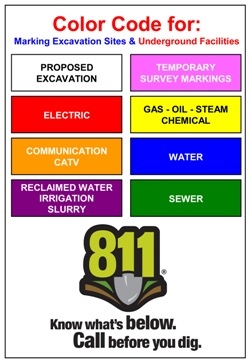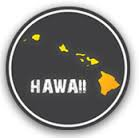
Here’s a clear, well-sourced breakdown of the APWA / Hawaii 811 (Dig Safely Hawaii) color codes used to mark underground utilities in Hawaiʻi (and generally across the U.S.). These color standards help excavators, locators, and contractors understand what type of utilities lie below so that digging can be done safely.
Why Color Codes Matter
- They provide a universal, visual shorthand to indicate the type of buried utility (electric, gas, water, telecom, sewer, etc.).
- They help prevent accidental damage to underground lines, which can be dangerous, costly, or even life-threatening.
- In Hawaiʻi, when you call 811 / Hawaii One Call (Dig Safely Hawaii), facility operators responding will mark underground lines using these standard colors.
- The system is based on the APWA Uniform Color Code / ANSI standards, which states that these temporary markings should follow standard color assignments.
The Color Codes (APWA / Hawaii 811)
Here is the typical color scheme used in Hawaiʻi via 811 / Dig Safely Hawaii, following APWA uniform standards:
| Color | Utility / Purpose | Notes / Use |
|---|---|---|
| White | Proposed excavation boundary or route | The dig site or the route you propose should be marked in white before submitting a locate request. Hawaii law requires that excavators mark their dig area with white. |
| Pink | Temporary survey markings | Used by surveyors for measurements, property lines, or for marking unknown features. |
| Red | Electric power lines, cables, conduit, lighting cables | Any energized lines or conduits. |
| Yellow | Gas, oil, steam, petroleum, or other gaseous materials | Indicates potential flammable / pressurized lines. |
| Orange | Communication, alarm or signal lines, cables or conduit (including fiber / telecom) | Telecom, data, conduit for communications. |
| Blue | Potable water | Drinking water lines. |
| Purple | Reclaimed water, irrigation, slurry | Non-potable water uses (irrigation, treated, recycled water) or slurry lines. |
| Green | Sewers, drainage, stormwater lines | All sanitary sewer / storm drain / drainage infrastructure. |
Additional Notes & Best Practices
- These are temporary markings (paint, flags, or stakes). The utility owners are not permanently marking the utility with paint — just indicating approximate location.
- Markings must be sufficiently visible and spaced so you can trace the path of the utility line.
- If the utility is in a location that’s difficult to mark directly (e.g. under pavement, obstacles), offset markings may be used, with arrows pointing toward the utility and distance written.
- The standard color code is used across many U.S. jurisdictions (APWA / ANSI) to ensure consistency.
- For Hawaiʻi specifically, White marking of the proposed excavation site is required before you submit your 811 / locate request — failure to do that may mean your request is disregarded.
- Remember: these marks only show approximate location. When you dig near marked lines, hand-digging or soft excavation is advisable until the utility is exposed and confirmed.
Call Center Phone Numbers
To call for a locate request dial 811 or (866) 423-7287
For administrative questions please call (877) 668-4001
Available from 8am to 5pm PST, Monday through Friday.
HOC-811 Business Hours
The Hawaii One Call Center is available 24 hours a day, seven days a week, every day of the year. Online service ticket requests are also available around the clock at www.digsafelyhawaii.com.

